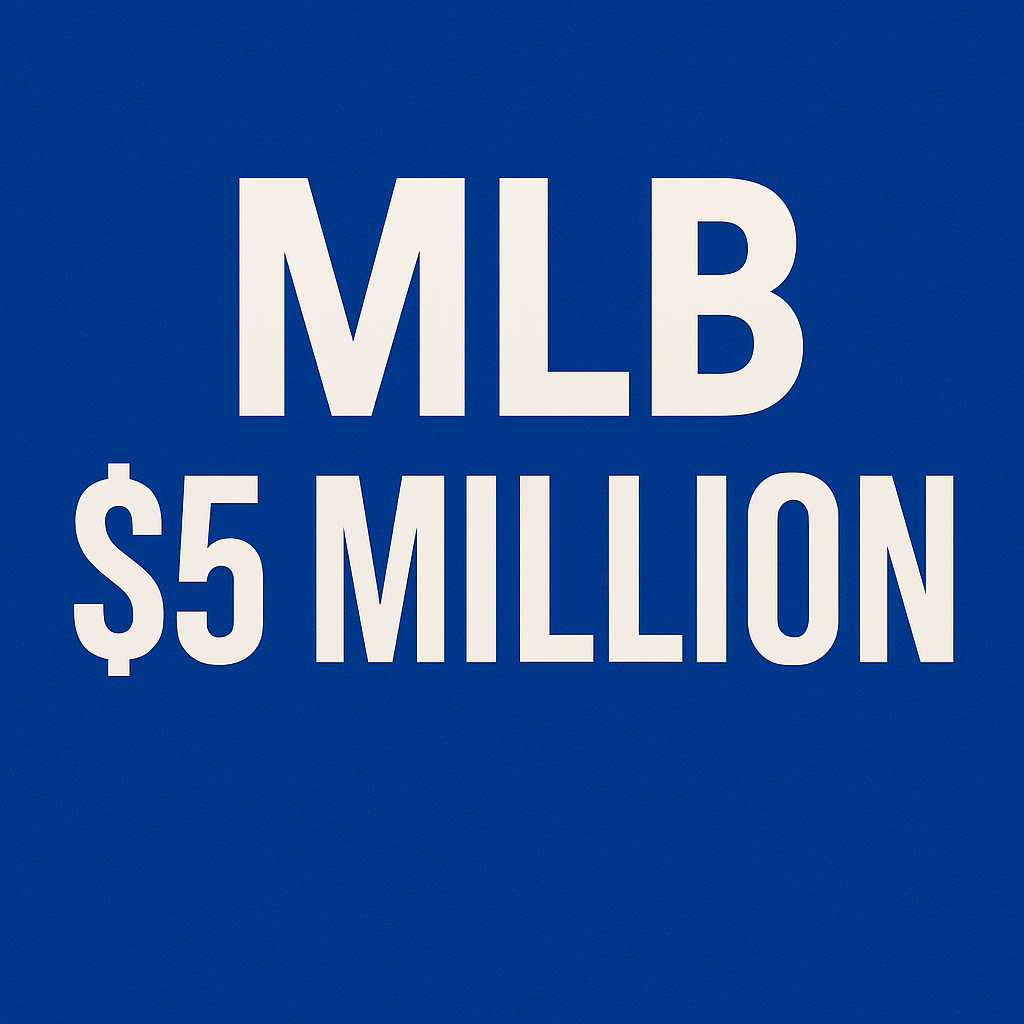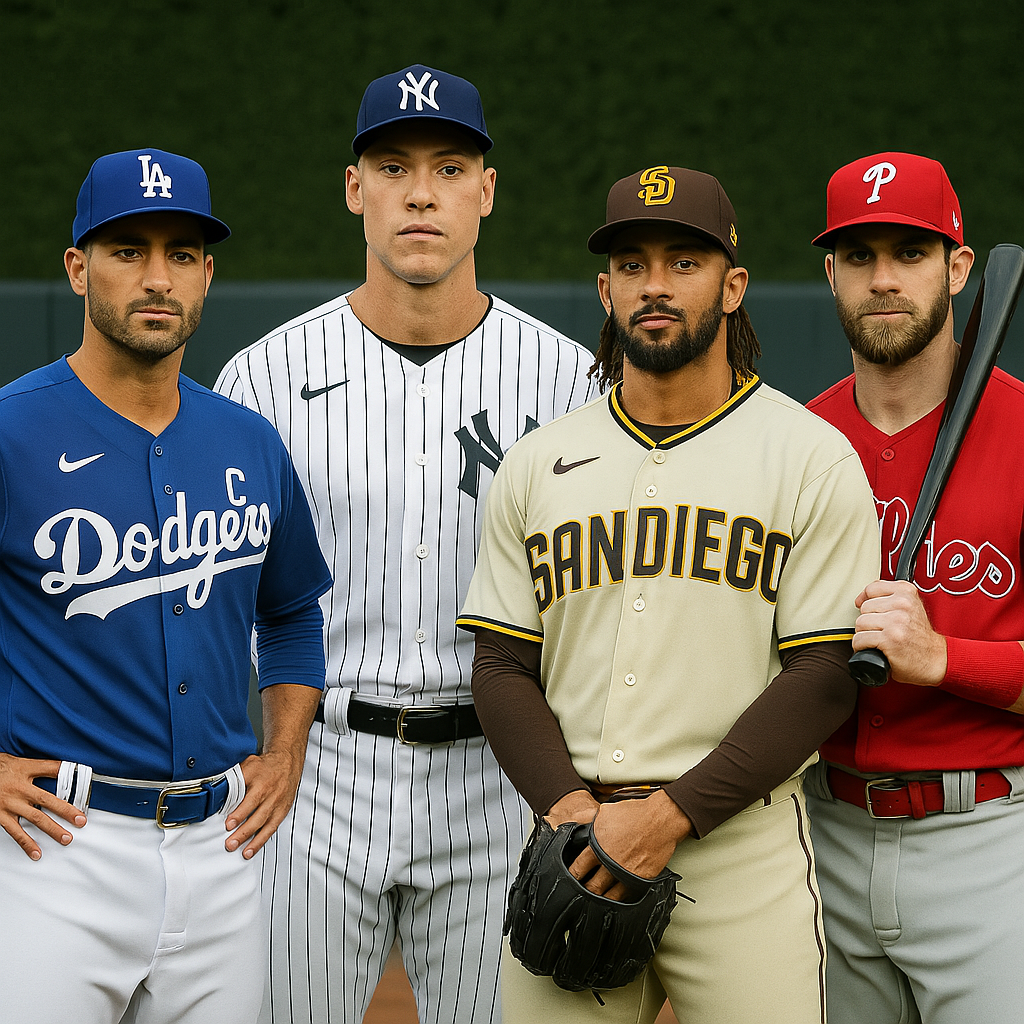MLB $5 Million Milestone: Average Player Salary Hits Record High
It finally happened—Major League Baseball’s average salary has climbed over $5 million. That number alone is enough to turn heads, but it’s not just about the money. It’s about how the money’s moving, who’s getting the biggest slices, and how some teams are spending like billionaires while others are barely opening their wallets.
According to a study released by the Associated Press, the average MLB salary on Opening Day 2025 hit $5.16 million. That’s up 3.6% from last year and marks the first time in history that the average paycheck for a big leaguer starts with a five.
It’s a milestone, no doubt—but it also raises a few eyebrows.
Soto Sets the Bar with $61.9 Million
The player leading the charge into this new salary territory? None other than Juan Soto, who signed a mind-blowing $61.9 million deal with the New York Mets. That’s not just the top salary for this year—it’s the highest single-season salary in MLB history, shattering the old record of $43.3 million shared by Max Scherzer and Justin Verlander.
Put another way: Soto will make more this year than the entire Miami Marlins roster.
Big Bucks in Queens and L.A.
The Mets, unsurprisingly, landed atop the payroll list for the third year running. They’ve committed $322.6 million to their roster for 2025. That’s slightly less than their record-setting $355.4 million in 2023, but still enough to lead the league.
Right behind them? The Los Angeles Dodgers at $319.5 million. Both teams are miles ahead of most of the league, especially smaller-market clubs like the Marlins, who have the lowest payroll at just $64.9 million. For perspective, both the Mets and Dodgers are spending nearly five times what Miami is.
But what’s really interesting is how the Dodgers are spending.
Ohtani’s Deal is Massive—but Looks Small on Paper
Shohei Ohtani signed a massive $700 million deal with L.A., but here’s the catch—he’s deferring the majority of that money until 2035. On paper, his 2025 salary is listed as $28.2 million, even though he’s technically making $70 million a year.
That creative accounting means Ohtani isn’t even in the top 10 for salary this season. But don’t let that fool you—he’s still the highest-paid player in the game, just on a delayed payment plan.
The Dodgers have used similar tactics for other stars too. Mookie Betts, Freddie Freeman, Teoscar Hernández, and Blake Snell are just a few of the players whose contracts involve deferred money. It’s a savvy strategy that helps L.A. stay under certain luxury tax thresholds, even while stacking their roster with talent.
Who Else Opened the Checkbook
Aside from the Dodgers and Mets, several other teams upped their payrolls in a big way heading into the 2025 season.
The Orioles jumped by $66 million—a clear sign they’re serious about building on last year’s success. Arizona raised their spending by $55 million, San Diego added $47 million, the Phillies tacked on $41 million, and Detroit followed with a $39 million increase.
That kind of movement shows that some mid-market teams are trying to keep pace, hoping to compete with the deep-pocketed clubs at the top.
Some Teams Hit the Brakes
While a handful of teams spent more, others slammed on the brakes.
After a disastrous 121-loss season in 2024, the Chicago White Sox cut their payroll by nearly $61 million. San Francisco wasn’t far behind, trimming $39.1 million. Miami slashed $31.7 million, and even the usually aggressive St. Louis Cardinals scaled back by $31.6 million.
The Yankees also cut costs, dropping $18.5 million from their payroll, despite reaching the American League Championship Series last year.
Low Rollers: Who’s Spending the Least
Only five teams started the season with payrolls under $100 million: the Marlins ($64.9M), A’s ($74.9M), Rays ($79.2M), White Sox ($80.9M), and Pirates ($87.9M). These clubs are operating on tight budgets, relying heavily on young, inexpensive talent or hoping to catch lightning in a bottle.
But when you compare them to clubs like the Dodgers and Mets, the financial gap is massive—and it’s growing.
A Closer Look at Player Pay
Let’s talk about who’s actually making what.
Out of 953 players on Opening Day rosters, 526 are making at least $1 million this year. That’s about 55% of the league, though it’s slightly down from 532 last year and 546 the year before that.
There are 15 players earning $30 million or more, 66 players at $20 million, and 177 players making at least $10 million. On the other hand, 35 players are earning the league minimum: $760,000.
So while the average salary keeps climbing, it’s still heavily skewed by the top earners.
The Median Tells a Different Story
Here’s where things get interesting. The median salary—the midpoint where half the players earn more and half earn less—has actually dropped to $1.35 million. That’s down from $1.5 million last year, and a far cry from the $1.65 million peak we saw in 2015.
What that means is the average is going up, but mostly because the highest-paid players are making more. The typical MLB player isn’t necessarily feeling that same level of financial growth.
Source: Study: MLB’s average salary tops $5 million for first time
Top 50 Players Take Nearly a Third of All Salary
The top 50 highest-paid players in baseball are earning 29% of all player salary in the league. That’s the same percentage as the past two years. Meanwhile, the top 100 earn nearly half—48% of the total payroll, up slightly from last season.
This top-heavy structure is great news if you’re one of the game’s elite, but for the average or younger player, it’s not quite as rosy.

How the Numbers Shift Throughout the Year
These Opening Day numbers don’t stay static. As the season rolls on, veteran players might get released, younger players get called up, and rosters shift. That usually drives the average and median salaries down by the end of the year.
For example, last year’s Opening Day average was $4.98 million. By the time the season ended, MLB’s internal numbers put the average at $4.59 million. The players’ union had it slightly higher at $4.66 million.
Players like Kyle Gibson (Orioles), Jason Foley (Tigers), and Hyeseong Kim (Dodgers) weren’t counted in Opening Day payroll figures because they started the year in the minors, even though their contracts are worth millions.
Baseball’s New Era: Big Money, Bigger Gaps
There’s no denying it—Major League Baseball is in the middle of a financial boom. Record-breaking contracts, monster payrolls, and average salaries crossing $5 million all point to a league that’s flush with cash.
But beneath the surface, there’s a growing divide between the haves and have-nots. Big-market teams are spending at levels small-market clubs simply can’t match. Superstar players are making more than ever, but the rest of the league isn’t seeing that same growth.
The challenge for MLB going forward will be figuring out how to keep the game competitive and fair, even as the money keeps getting bigger.
Read More: New York Knicks Ink PJ Tucker to a Two-Year Agreement


